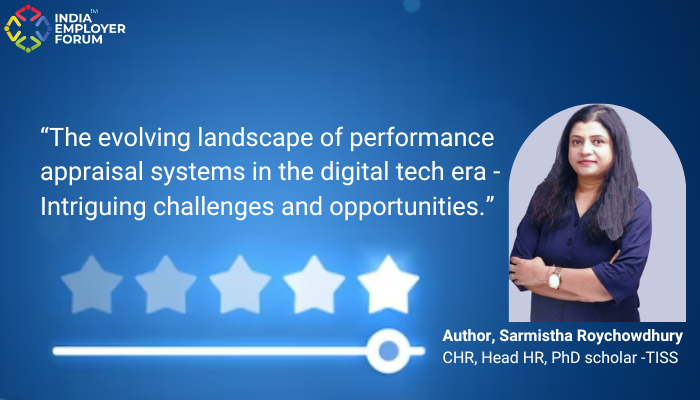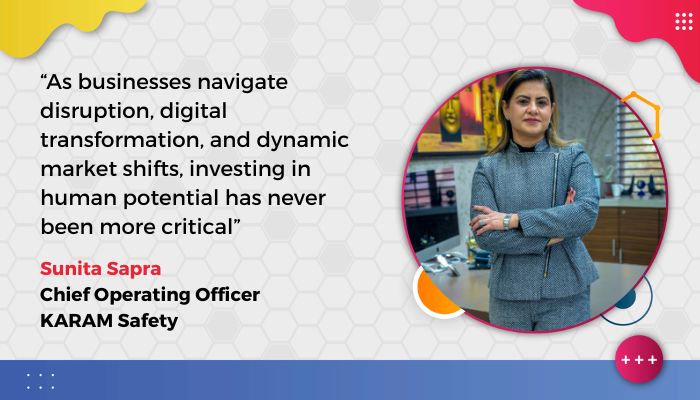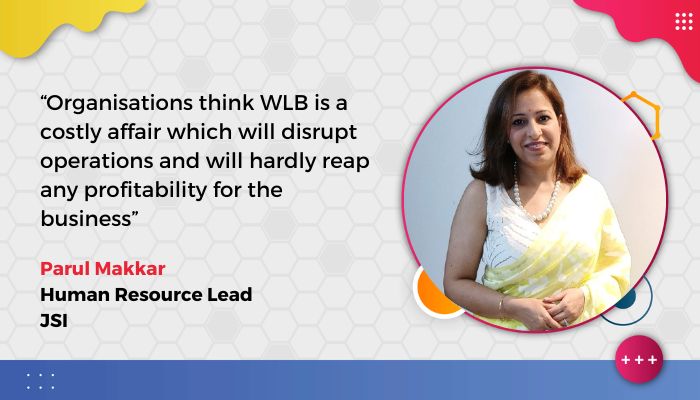Performance appraisal is not just a routine process but a strategic tool that can drive organizational success.
As a key driver of the important function of human resources, I have witnessed the profound impact of Performance Management Systems (PMS) on our department and the entire organization. PMS has enabled us to create a culture of excellence, where every employee strives to achieve their full potential and contribute to our shared vision. PMS has also helped us to nurture and retain our talent, by providing them with regular feedback, recognition, and development opportunities. PMS has also enhanced our strategic decision-making, by providing us with data and insights on our human capital. However, PMS is not without its challenges. We have to constantly adapt to the changing business environment, leverage technology, and ensure fairness and transparency in our processes. In this article, I will take you through the evolution of PMS, from its early origins to its recent trends, and share some of the best practices and lessons learned along the way.
Early Origins (1960s): The concept of PMS can be traced back to the early 1960s, when organizations started to use performance appraisals to evaluate their employees. The main purpose of these appraisals was to measure the results achieved by the employees and to provide them with feedback on their strengths and weaknesses. The appraisals were usually conducted once a year and involved setting goals, reviewing achievements, and rating performance.
Shift to Continuous Feedback (Late 1960s – Early 1970s): In the late 1960s and early 1970s, PMS underwent a significant shift, as organizations realized the limitations of annual appraisals. They recognized the need for continuous feedback, which would allow for more timely and relevant communication between managers and employees. Continuous feedback also fostered a more collaborative and supportive work environment, where employees could receive guidance, coaching, and recognition throughout the year.
Balancing Objectivity and Subjectivity (1980s – 1990s): During this period, organizations faced the challenge of balancing objectivity and subjectivity in their PMS. They wanted to use quantitative metrics, such as sales figures, productivity rates, and quality indicators, to measure performance. However, they also wanted to capture the qualitative aspects of performance, such as teamwork, creativity, and customer satisfaction. To address this challenge, they introduced 360-degree feedback, which allowed for input from multiple sources, such as peers, subordinates, and supervisors. This gave a more comprehensive and balanced view of performance and also encouraged feedback-seeking behaviour among employees.
Technology-Driven Transformation (2000s): The 21st century brought a revolution in PMS, thanks to the advances in technology. Technology enabled the collection, storage, and analysis of large amounts of data, which could be used to track and evaluate performance. Technology also facilitated the transition from paper-based to online PMS, which made the process more efficient, convenient, and accessible. Online PMS also allowed for more customization and personalization, as employees could set their own goals, monitor their progress, and access their feedback anytime and anywhere.
Agile Goals and Skill Enhancement (2010s): The digital era demanded agility from organizations and their employees. They had to cope with the rapid changes in the market, customer expectations, and competition. To remain relevant and competitive, they had to adopt agile goal-setting, which involved setting short-term, flexible, and adaptable goals, aligned with the changing priorities. PMS also focused more on skill enhancement, as employees had to constantly learn and update their knowledge and abilities.
PMS incorporated individual development plans, which identified the skill gaps and the learning needs of the employees, and provided them with targeted training and coaching programs. PMS also used data-driven insights, such as dashboards, reports, and analytics, to measure and improve performance.
Equality and Multiple Feedback Sources (Recent Trends): In recent years, organizations have embraced equality and diversity in their PMS. They have dismantled the traditional hierarchies and promoted a more egalitarian and inclusive work culture. They have also used 360-degree feedback systems, which gather input from various sources, such as peers, subordinates, and self-assessment. The aim is to foster a culture of continuous improvement, where employees seek and receive feedback from multiple perspectives, and use it to enhance their performance and development. PMS also aligns the performance of the employees with the goals of the organization, ensuring that everyone works towards a common purpose.
I have seen the evolution of performance appraisal systems over the years. I have experienced the challenges and opportunities that the digital era has brought to our department in organizations. Performance appraisal is not just a routine process but a strategic tool that can drive organizational success. In this article, I will share with you some of the key trends, challenges, and best practices in performance appraisal in the digital context.
Digital Transformation and Performance Management: The digital revolution has changed how we work, communicate, and organize. We have to embrace digital technologies to stay competitive and relevant. However, this also means that we have to adapt our performance management practices to the new realities. Traditional performance appraisal methods, such as annual reviews and ratings, are no longer sufficient or effective in the digital context. We have to rethink how we evaluate our employees, taking into account the changes in work patterns, communication modes, and organizational structures.
Key Trends in Performance Appraisal: Some of the key trends that I have observed in performance appraisal are:
- Outcome-Oriented Frameworks: We have shifted our focus from the process to the outcome. We measure our employees based on the results they deliver, rather than the activities they perform. We use quantitative metrics, such as key performance indicators (KPIs), to track and evaluate performance.
- Transparency and Accountability: Technology has enabled us to provide real-time feedback, transparency, and accountability to our employees. We use online platforms, such as dashboards and reports, to communicate performance expectations, progress, and results. We also encourage our employees to take ownership of their performance and seek feedback proactively.
- Continuous Feedback: Technology has also facilitated the provision of continuous feedback, which is essential for performance improvement and development. We use digital tools, such as instant messaging and video conferencing, to conduct regular and frequent performance discussions with our employees. We also use 360-degree feedback systems, which allow us to collect input from multiple sources, such as peers, subordinates, and supervisors. This gives us a more comprehensive and balanced view of performance and also fosters a culture of feedback-seeking and feedback-giving.
- Skills and Competencies: We have also updated our skills and competencies framework, to reflect the changing demands of the digital era. We no longer rely on rigidly predefined skills, but rather on the adaptability, learning agility, and digital competencies of our employees. We assess our employees not only on what they know, but also on how they learn, apply, and innovate.
Challenges and Considerations: Despite the benefits of technology, we also face some challenges and considerations in our performance appraisal practices. Some of these are:
- Data-Driven Insights: We can leverage data analytics to gain insights into our employee performance. However, we also have to balance the quantitative metrics with the qualitative aspects of performance, such as teamwork, creativity, and customer satisfaction. We have to use both objective and subjective measures and ensure that they are aligned with our organizational goals and values.
- Bias Mitigation: We have to be careful about the potential bias and unfairness that algorithms and AI-driven assessments may introduce. We have to design and test our systems to ensure that they are free from bias and discrimination. We also have to involve human judgment and intuition and provide opportunities for appeal and review.
- Agile Performance Goals: We have to cope with the dynamic and uncertain digital environment, where our priorities and strategies may change rapidly. We have to adopt agile goal-setting, which involves setting short-term, flexible, and adaptable goals, aligned with the changing needs of the organization. We also have to review and update our goals regularly and provide feedback and support to our employees accordingly.
- Employee-Centric Approach: We have to put our employees at the centre of our performance appraisal practices. We have to provide them with personalized development plans, career paths, and skill-enhancement opportunities. We have to recognize and reward their achievements and motivate them to perform better. We also have to ensure their well-being and address any issues or concerns they may have.
Promoting Innovation Through Appraisal: One of the key objectives of our performance appraisal practices is to promote innovation among our employees. We want our employees to generate new ideas and contribute to our product/service enhancements. We also want to create a culture of innovation, where our employees are encouraged to experiment, learn, and collaborate. Some of the ways we do this are:
- Individual Innovation: We assess our employees on their innovation, which includes their creativity, problem-solving, and initiative. We use indicators, such as the number and quality of ideas generated, the feasibility and impact of the solutions proposed, and the implementation and evaluation of the actions taken.
- Signalling Effect: We are aware of the signalling effect that our HR practices, including performance appraisal, have on our employees. We want to send positive signals that we value and support innovation. We do this by using formal appraisal systems that are consistent, transparent, and fair. We also use informal feedback systems that are timely, relevant, and constructive.
- Balancing Formality and Creativity: We also balance formality and creativity in our performance appraisal practices. We use formal appraisals to provide structure, clarity, and accountability. We also use informal feedback to foster creativity, idea-sharing, and experimentation. We create a safe and supportive environment, where our employees can express their opinions, take risks, and learn from failures.
Performance appraisal is a vital part of our HR function. It helps us to drive organizational success, by aligning individual performance with organizational goals, enhancing employee development, and fostering a culture of excellence and innovation. However, performance appraisal is also complex and challenging, especially in the digital era. We have to constantly adapt and innovate, to keep up with the changing demands and expectations of our employees and our customers. We have to find the optimal balance between technology-driven assessments and human intuition, between data insights and employee well-being. This is a tough puzzle to solve for any HR, but we are confident that the HR Teams across organizations can do it, with the help of the dedicated and talented team.
Resources:
- Evolution of Performance Management – Management Study Guide
- A rief History of Performance Management | People HR
- The Evolution of Performance Management System – Darwin box
- The Evolution of The Performance Management Process – Forbes
- The History of Performance Management | Employment Hero
- Performance Appraisal and Innovative Behavior in the Digital Era
- Performance Evaluation for Digital Transformation | SpringerLink
- How technology is redefining the future of appraisals – ETHRWorld.com
- PERFORMANCE APPRAISAL SYSTEM IN THE DIGITAL ERA – JETIR
An article written by Sarmistha Roychowdhury, Researcher -Tata Institute of Social Science, Mumbai (Head HR /CHRO)
Disclaimer: The opinions and views expressed in this article, including any accompanying data, are the sole responsibility of the author and should not be construed as reflecting the official policy or position of India Employer Forum.






